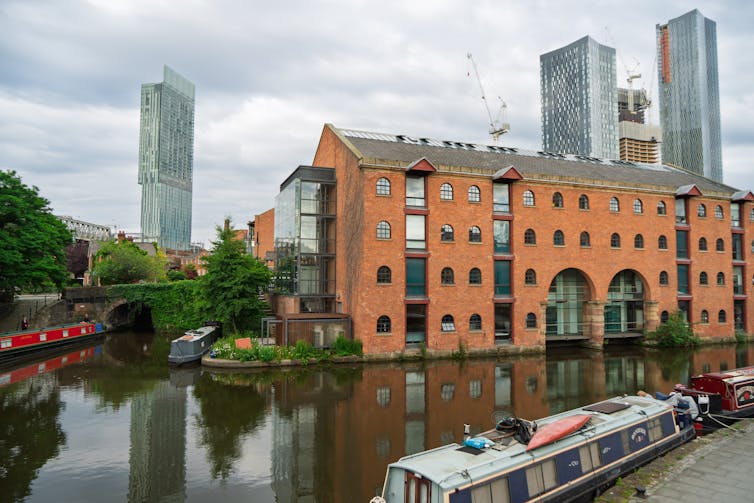Starmer’s plan to ‘build baby build’ risks more American-style car-dominated sprawl
- Written by James White, Professor of Planning and Urban Design, University of Glasgow

The UK’s Labour government has promised[1] to “take an axe to red tape” through[2] “bold reforms to the planning system”. It hopes to kickstart economic growth by generating[3] the “biggest building boom in a generation”.
It seems that the aim to “build baby build[4]”, in Prime Minister Keir Starmer’s words, trumps all else. However, this raises important questions about the government’s parallel ambition to reach net zero by 2050.
As researchers of urban planning, we worry that plans to hand more power to developers will simply result in more low-density, car-dependent suburbs. These developments are cheap and efficient to build, which is why they underpin the profits of the larger housebuilders[5].
But research has consistently demonstrated they are land hungry, poorly designed, unsustainable[6] and damaging to nature[7].
The UK instead needs a fundamental rethink of its approach to housing and development as part of the transition to a low carbon future. Any future urban growth must be achieved while simultaneously reducing the amount of land, energy and materials used.
Redesigning existing towns and cities
We recently launched a research project, Urban Retrofit[8], to explore how the UK’s towns and cities can be redesigned to support the transition to net zero. The good news is that we already know a lot about how to make places more environmentally sustainable.
It is about renovating buildings to improve energy efficiency, like adding insulation and installing things like heat pumps[9]. It includes building at higher densities, using brownfield land better, and adapting streets to encourage safer walking and cycling.
We can make it easier to travel on public transport and seamlessly transfer between buses, trains and trams. And we can plant indigenous trees and plants to provide wildlife habitats and cool urban areas, and slow down rainwater to help prevent floods.
A retrofitting approach to urban development can also have wider benefits, such as bringing derelict buildings back into use or creating spaces to grow food. It is important that these efforts do not exacerbate existing inequalities, though.
If higher density neighbourhoods are created in places with high house prices, for example, it will be essential to guarantee people can still afford to live in them. This will mean building more social housing.
Some of the initiatives outlined in Labour’s planning reforms recognise the need to build more sustainably. These include support for some more affordable housing, and higher density development allowed “near transport hubs[10]” and “central to local communities[11]”. It also includes financial packages for local authorities seeking to “unlock housing on brownfield sites[12]”.
Low density and car-dependent
The bad news is that there is little evidence that greener urban growth can be realised without further harming the environment. The necessary transformation certainly won’t happen without curbing the development industry’s appetite for the energy-inefficient, low-density and car-dependent neighbourhoods, retail parks and workplaces that already sprawl around the edges of urban areas.
And that won’t be possible while politicians fall back on blaming an already under-resourced planning system, rather than tackling this deeper problem in our approach to development.
Policy support for brownfield development is unlikely to convince housebuilders to take on these financially risky sites. This is especially true if, under Labour’s other proposals, local authorities will be required to grant developers planning permission on previously undeveloped land.
The government is already redefining parts of the green belt as grey belt[13] to make more land available for development. And much of that land will be in precisely those locations developers prefer, on the edges of settlements where costs are usually lower, profits are higher and sites are relatively similar and easier to develop.
As the planning system is pushed to make ever more land available for development, Labour’s reforms will embolden the industry to continue seeking permission for unsustainable urban expansion.
An array of landowners, developers, land agents, lawyers, consultants, builders and shareholders will likely make a lot of money. But more people will be locked into unsustainable lifestyles while time, resources and energy are focused away from the challenges of adapting our existing settlements.
As our project is exploring, there is an urgent need to first retrofit within existing towns and cities, especially in suburban areas that were built for the automobile age.
This will require much more positive ambitions for the planning system and big changes to the ways the development industry operates. It will also require a willingness to ask much more searching questions about the sustainability of going all out for growth.







